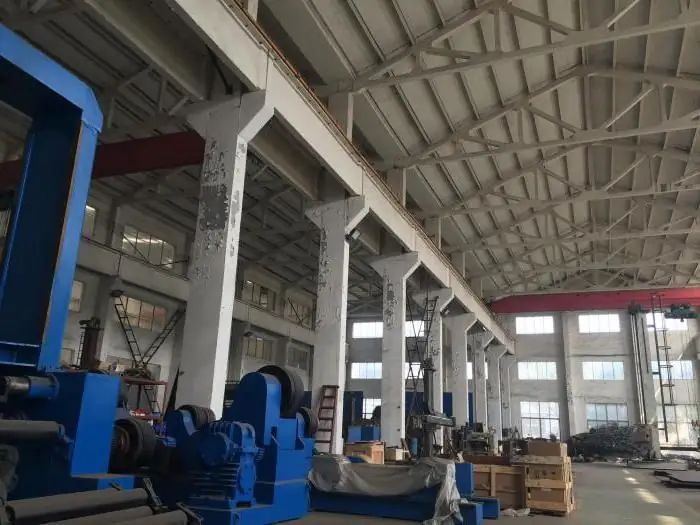2026 Author: Howard Calhoun | [email protected]. Last modified: 2025-01-24 13:10:29
The need to correctly take into account the received property, and then put into operation fixed assets is due to tax legislation. The last procedure will be discussed in the article. It should be noted that fixed assets (hereinafter referred to as OS) include objects with a price of more than 40 thousand rubles, and their service life is at least 12 months. The cost of other items can be written off once as material expenses.

According to RAS 6/01, the commissioning of fixed assets provides for the formation of the initial cost of assets on account 08. This is where the actual costs of their acquisition and delivery accumulate. Receipt to this account is fixed by the following postings:
| Operation | Dt | CT | Receipt document | |
| 1 | Purchase for a fee | |||
| 1.1. | Receipt of assets from the supplier | 08 | 60 | Purchase agreement, invoice |
| 1.2. | Commissioning the OS | 01 | 08 | Act of acceptance-transfer No. OS-1 |
| 2 | Inflow from the founders | |||
| 2.1. | Receipt of fixed assets as authorized capital | 08 | 75-1 | Order |
| 2.2. | Commissioning the OS | 01 | 08 | Act of acceptance-transfer No. OS-1 |
| 3 |
Household construction |
|||
| 3.1. | Reflected the cost of building an organization | 08 | 71, 10, 02, 70, 69 | Expense statements, cash receipts, payroll records |
| 3.2. | Commissioning the OS | 01 | 08 | Act of acceptance-transfer No. OS-1 |
| 4 | Receipt free of charge | |||
| 4.1. | The donated property was taken into account | 08 | 92, 98-2 | Contract of gratuitous transfer, donation |
| 4.2. | Fixed asset commissioned | 01 | 08 | Act of acceptance-transfer No. OS-1 |
After the formation of the initial cost on the account. 08, an acceptance committee is created, the composition of which contains a written order for the commissioning of fixed assets. On the basis of this administrative document, the OS-1 form (acceptance certificate) is filled out.

Sheet 1 includes the details of the supplier (deliverer) and the recipient, the date and number of the order, general information about the object. These include: the date the object was registered, the account (sub-account) according to analytics, the group according to the All-Russian classifier, inventory and serial numbers.
There are three sections on sheet 2 summarizing the characteristics of the transferred object. The first of them is filled in by the transferring party, if it was previously operated. At the same time, the dates of issue, start of use, last overhaul, period of use after the fact, accumulated depreciation and value expressions are indicated.
The recipient fills in the next section. The initial cost is indicated according to actual expenses from account 08 (excluding VAT). The expected life of new assets is determined according to the specifications. passport, for used ones - using the previous section (basically this is the difference between columns 5 and 4). Sometimes an organization needs to formalize the commissioning of fixed assets that have been written off. In this case, you have toindependently determine the approximate period of their operation, based on the technical condition at the date of acceptance. Columns 3 and 4 contain the name and rate of deductions for depreciation.
The third section is supposed to include other information about the object, when there is a need to describe in more detail its valuable qualities or other characteristics.
Sheet 3 contains the results of the tests, conclusion, technical documentation, followed by the signatures of the chairman and members of the commission. At the bottom are the signatures of responsible persons and accountants of both parties.
It should be noted that there are several types of acts for the commissioning of fixed assets, such as OS-1a (for the design of buildings and structures) or OS-1b (simultaneous commissioning of several objects).

Form OS-1a takes into account all the necessary information to formalize the commissioning of the building in accordance with the requirements of the law. When filling it out, pay attention to some features. Sheet 1 must contain information about the state registration of rights to the object. Below is information about the designer or builder.
The first section of sheet 2 indicates the start and end dates of construction, reconstruction, overhaul. The lower table of the third section combines qualitative and quantitative characteristics with a breakdown by structural elements according to the technical passport of the object. The rest of the data is filled in similarly to the main form OS-1.
Recommended:
Registration of fixed assets: the procedure for registration, how to issue, tips and tricks

The fixed assets of an enterprise are recognized as material objects used in the production of goods, production of works, provision of services, as well as for management needs. This category includes both exploitable assets and assets that are in stock, leased or mothballed
Structure and composition of fixed assets. Operation, depreciation and accounting of fixed assets

The composition of fixed assets includes many different assets that are used by the enterprise in its core and non-core activities. Accounting for fixed assets is a difficult task
Fixed assets include Accounting, depreciation, write-off, fixed asset ratios

Fixed production assets are a certain part of the property of the company, which is reused in the production of products, performance of work or provision of services. OS are also used in the field of company management
Posting to fixed assets. Basic accounting entries for fixed assets

The non-current assets of an enterprise play an important role in the production cycle, they are associated with logistics processes, trade, provision of services and many types of work. This type of assets allows the organization to earn income, but for this it is necessary to carefully analyze the composition, structure, cost of each object. Constant monitoring is carried out on the basis of accounting data, which must be reliable. Basic postings on fixed assets are typical
Sale of fixed assets: postings. Accounting for fixed assets

Material base, technical equipment of any enterprise depends on the structure of the main assets. They are an integral part of the production process, they are used in the implementation of all types of economic activity: the provision of services, the performance of work. The use of BPF with maximum efficiency is possible with proper planning of their operation and timely modernization. For a comprehensive analysis of this asset, it is necessary to correctly reflect it in all types of accounting

